Volume 9, Issue 3
Displaying 1-10 of 10 articles from this issue
- |<
- <
- 1
- >
- >|
Chairperson's overview
-
1989 Volume 9 Issue 3 Pages 153-154
Published: 1989
Released on J-STAGE: November 10, 2006
Download PDF (193K)
Symposium
-
1989 Volume 9 Issue 3 Pages 155-162
Published: 1989
Released on J-STAGE: November 10, 2006
Download PDF (1216K) -
1989 Volume 9 Issue 3 Pages 163-168
Published: 1989
Released on J-STAGE: November 10, 2006
Download PDF (969K) -
1989 Volume 9 Issue 3 Pages 169-176
Published: 1989
Released on J-STAGE: November 10, 2006
Download PDF (1280K) -
1989 Volume 9 Issue 3 Pages 177-183
Published: 1989
Released on J-STAGE: November 10, 2006
Download PDF (995K)
Special lecture
-
1989 Volume 9 Issue 3 Pages 184-191
Published: 1989
Released on J-STAGE: November 10, 2006
Download PDF (1354K)
Educational lecture
-
1989 Volume 9 Issue 3 Pages 192-198
Published: 1989
Released on J-STAGE: November 10, 2006
Download PDF (1031K)
Original article
-
1989 Volume 9 Issue 3 Pages 199-204
Published: 1989
Released on J-STAGE: November 10, 2006
Download PDF (917K) -
1989 Volume 9 Issue 3 Pages 205-212
Published: 1989
Released on J-STAGE: November 10, 2006
Download PDF (1212K) -
1989 Volume 9 Issue 3 Pages 213-218
Published: 1989
Released on J-STAGE: November 10, 2006
Download PDF (922K)
- |<
- <
- 1
- >
- >|
